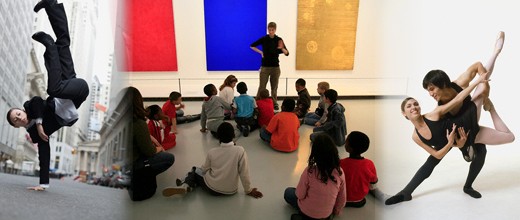Website sections:
Current section's content:
- You Can Manage and Program Creativity
- Creative Abilities and Creative Thinking Skills Management
- Briefly About CreativityModel Method Usage
- CreativityModel Method Usage Opportunities and End-User License Agreement
- Current Version of CreativityModel Method
- CreativityModel Method Abstract
- CreativityModel Method Version Changes
- CreativityModel Method Glossary
- Explanation of the Method's Component Parts and How the Component Parts Interact
- Explanation of How the Method's User Achieves Results
- CreativityModel Method - Generate Dots, Connect the Dots
- CreativityModel Method Usage Areas
- The Artist in You
- Growth of the Artist in You
- The Result Getter in You
- Applying the Result Getter in You
- About Choice Supported Creativity Usage
- The Problematic Side of Business Creativity
- Creativity Management and Business Creativity
- Sales CRM Software Development Example
- Why Does Creativity Management Matter and What Can You Do About This?
- Goal Oriented Creativity Management and CreativityModel Method
- Goal Oriented Creativity Management and Your Personal and Professional Life
- Teenager, Version 1 - Confusion
- Teenager, Version 2 - Career Development and Life Management
- Managers, Version 1 - Zigzagging Business Development
- Managers, Version 2 - Innovation Management and New Product and Service Development
- The President, Version 1 - Some of It Did Happen
- The President, Version 2 - Self-Expression, Conflict Resolution, Creativity and Leadership
- CreativityModel Method Development Background
- Further Development of CreativityModel Method




















The Artist in You
CreativityModel Method addresses goal oriented business creativity and self-expressive artistic creativity usage in combinations. Both are needed in personal and professional everyday life.
This article is first in a four article series and accompanies the following articles: The Artist in You (the current article), Growth of the Artist in You, The Result Getter in You, Applying the Result Getter in You. This series describes CreativityModel Method usage areas.
Do you want to say something and express yourself with what you do? With your work, for example?
When you do, then that's the artist in you.
When you set and achieve goals or objectives, that's the result getter in you.
Of course, you can be both and you can combine these two sides for optimal outcomes. That is, you can use self-expressive choice supported creativity and goal oriented creativity in combinations. That's what life requires as well. Think about work, or school, and other everyday tasks - whatever you need to handle. Most of these tasks require setting and achieving goals or objectives. Building self-expressive creativity usage into these tasks can make the task handling processes more satisfying experiences for you.
Of course, you can be both and you can combine these two sides for optimal outcomes. That is, you can use self-expressive choice supported creativity and goal oriented creativity in combinations. That's what life requires as well. Think about work, or school, and other everyday tasks - whatever you need to handle. Most of these tasks require setting and achieving goals or objectives. Building self-expressive creativity usage into these tasks handling processes can make these processes more satisfying experiences for you.
CreativityModel Method addresses the mechanics of goal oriented and choice supported creativity. Learning the mechanics can become a bit boring, but the good thing about it is that it can be learned. The better are your skills, the more you can do with them. For example, you can learn the mechanics of the artistic processes and apply the same skills in other areas in life.
The result is usage of self-expressive choice supported creativity and goal oriented creativity in combinations.
So, let's take a look at choice supported creativity usage mechanics. Here's the big picture.
Let's Say that This Is You
Let's say that you are at work and need to develop a creative solution, or are at home and are designing or decorating something, or are playing with kids.
Or, let's say that you are painting, or writing, or composing music, or acting - or doing something else equally satisfying where you can improvise, experiment and express yourself.
In each specific area your abilities, technical expertise and experience make a difference, of course. However, as far as expressing yourself through a medium and using choice supported creative thinking skills and CreativityModel Method are concerned, these and other similar activities are all the same.
So, let's say that you are painting or drawing. You can start with a single contour line, for example. Or, with marking down some structural parts of what you intend to draw or paint. Or with a splash of color.
Or perhaps you are writing - music perhaps? Similarly to the above, you would work with tones and musical phrases.
Most likely what you do has a theme. How you use the theme makes a difference in the outcome.
Similarly, what you do has a structure. How you use the structure can make as big a difference in the outcome.
You can choose components, re-paint, re-draw, re-write and re-assemble them, discard and add them.
Whatever you feel like.
You feel something, don't you? Use those emotions for self-expressive purposes. If you don't have enough emotions in you, well, do something to generate them. Get angry. You can find ways to do that. Become happier, or sad.
The same goes for opinions. When you have opinions, use them, and if needed, generate them and use them for creative purposes.
The same goes for values and beliefs - but here you have to be careful. Values, beliefs and experiences can be powerful motivators, but they can equally well be inhibitors or limiting factors that prevent you from using freely your choice supported creative thinking skills. With some effort and training, you can manage such limiting factors, too.
In one way or another, think through the theme - how does it relate to your experiences, beliefs and values?
Feel and express.
Or, if you want to choose a more mechanical route, build a structure and then the rest of the outcome around the structure. Use the theme and work with the structural parts like you do with the components until you are happy with the outcome. Re-paint, re-draw, re-write, re-assemble, discard and add both structural parts and components.
You probably have to apply project-specific rules to whatever you do. Work with these rules similarly to how you work with your values and beliefs. Use the rules for generating content. Every once in while you may want to dare to question the rules. Do they really have to be used the way you think they do? Can rules from other areas be applied as well? Can they be mixed and matched? Why not? Are you sure? Test and try alternative combinations.
Be careful of how you use goal oriented creativity. In many instances you have to work on creative projects in a goal oriented manner, by using a primarily goal oriented structure - when you work on a project for a customer, for example. Then the framework is no longer the same that is described above, but, of course, you can use the two creativity management approaches in countless different combinations. The outcome will differ, though.
The above thoughts are simply reflections of pieces of choice supported creativity and CreativityModel Method usage parts. The idea here is to give a picture of what's involved. Through further exploration, you can connect these parts for yourself, so that you can do your best work in different environments and situations.
Why Would You Want to Do This?
Goal oriented creativity and choice supported creativity are two complementary sides of CreativityModel Method.
Goal oriented creativity is about setting and achieving goals and objectives, and choice supported creativity is primarily about self-expression through a medium and action.
Many everyday tasks involve very little self-expressive activity. They help to maintain life and as such are good and necessary. The same may apply to most of the work that you do. These tasks require primarily goal oriented creativity usage.
But the artist in you wants to express him or herself through exploration and through using a medium and action. Writing and storytelling, acting, dance, music, paint, stone, wood, metal, glass and nowadays increasingly digital technology are some of the most commonly used mediums.
However, these are not the only alternatives.
You can bring your self-expressive side and your everyday life closer together. You can make your everyday activities more self-expressive as well, by knowingly combining choice supported creativity and goal oriented creativity usage principles.
It seems to be the case that in everyday life, personally and professionally, most people manage their creative thinking skills by using both creativity management approaches countless times and by assembling results rapidly in different sequences. You probably are among them. You probably don't think much about how you manage your creative thinking skills, because using these skills is just a natural part of your life.
However, managing your own creative thinking skills consciously can provide benefits and advantages. One of the benefits is that you can achieve results in every aspect of your life more effectively and efficiently.
Another benefit is a greater degree of self discovery. Your creative thinking skills management is part of you, and understanding yourself better enables you to relate better to other people and to the rest of your own life.
Will that make you happier? More satisfied with your life?
Probably.
You have to try usage of goal oriented creativity and choice supported creativity so, that you actually manage these thinking processes as skills, if you want to draw your own conclusions. It may take some effort from your part, but the end result is likely to be worth the efforts.

